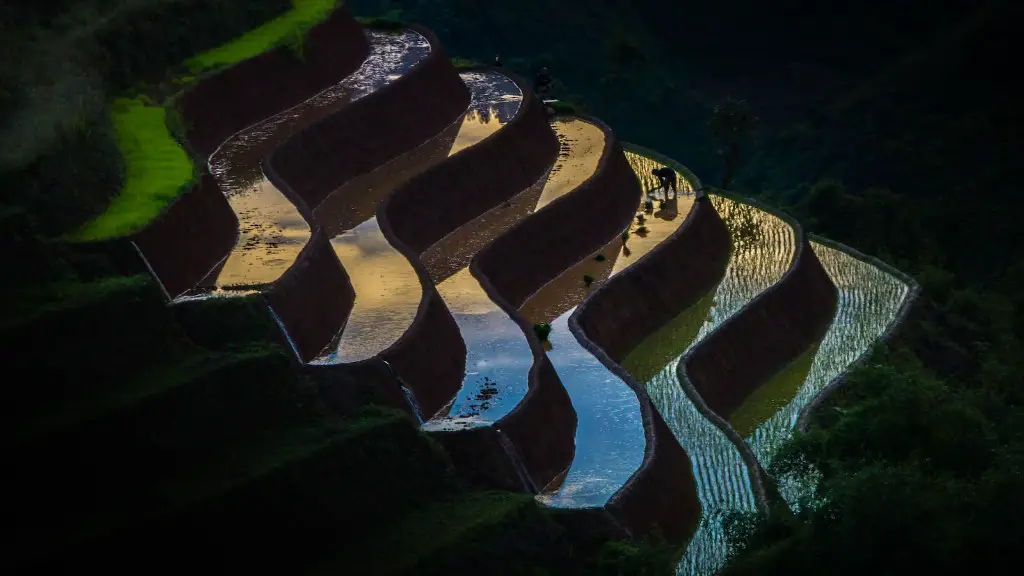Agriculture is one of the most important economic activities around the world and the use of water pumps plays a major role in this sector. Typically, a water pump is a device that transfers liquid from one place to another. In agriculture, this device is used to move water to farm fields, irrigation systems, and other high-demand areas. In this article, we will discuss in detail the use of a water pump in agriculture.
One of the primary uses of a water pump in agriculture is irrigation. Water pumps are used to move water from the source to the canals or the farm fields, enabling the plants and crops to receive adequate amounts of water throughout the year. This helps in cultivating healthy crops and plants that can later be processed and used for fertilizing the soil or producing food products.
Another use of water pumps in agriculture is for providing additional water during drought seasons or periods of insufficient rainfall. By using a water pump, farmers can collect ground or surface water and then pump it onto their crops to ensure it receives the required amounts of water for healthy growth. In some cases, water pumps are used to move underground water to the surface for cultivation purposes.
In addition, water pumps are also used for various other activities in the agricultural sector. For instance, water pumps are used to power machines in order to facilitate tilling, harvesting, and other operations. Water pumps can also be used to fill up tanks which can then be used to provide water to livestock.
Overall, it is evident that water pumps are an important device in the agricultural sector. They can be used to move liquid from one place to another, enabling farmers to irrigate their crops, fill up tanks for livestock, and power agricultural machines. In this way, water pumps play a vital role in the agricultural sector, ensuring that crops and plants receive the adequate amount of water they need throughout the year.
What are the Components of a Water Pump?
Water pumps are comprised of several components, all of which must be present for the device to work effectively. The primary components of a water pump include the impeller, the intake and outlet ports, the volute, the drive shaft and the motor. The impeller is situated at the center of the water pump and it consists of curved blades that move the liquid from the intake port to the outlet port. The volute is the casing which houses the blades and the drive shaft, which is responsible for transmitting the rotational motion between the motor and the impeller. The motor is connected to a power source, such as electricity or gasoline, to provide the drive shaft with power to rotate the impeller.
What are the Advantages of Water Pumps?
Water pumps offer several benefits, including increased efficiency and convenience. They are relatively simple and easy to use, which makes them ideal for farmers who need to quickly irrigate their crops during short periods of time. Moreover, water pumps are available in different sizes and configurations, meaning that they can be tailored to different agricultural needs and requirements. In addition, water pumps use very little energy and the water they displace is usually recycled and can be used for other purposes. This makes them a highly cost-effective solution for agricultural operations.
What are the Different Types of Water Pumps?
Water pumps can be divided into two main categories – centrifugal pumps and positive displacement pumps. Centrifugal pumps work by rotating impellers, and they are typically used for draining and moving large amounts of water. On the other hand, positive displacement pumps use pressurized air or pistons to move liquid from the intake port to the outlet port. These pumps are more efficient and can be used to move objects other than water, such as liquid fertilizers or pesticides.
How do You Maintain a Water Pump?
Maintaining a water pump is important in order to keep it functioning properly and providing adequate value. In general, regular inspection and cleaning of the intake and outlet ports, the impeller, and the volute should be performed in order to ensure the device is in working order. Furthermore, the motor should be checked periodically to ensure that it is receiving the correct amount of power. Lastly, if any parts of the water pump are worn or damaged, they should be replaced immediately in order to avoid mechanical breakdowns and consequential damage.
How do You Select a Water Pump?
When selecting a water pump, it is important to consider the specific needs of the agricultural operation. This includes the size and flow rate of the pump, the type of liquid it will be used to move, and the desired power source. In addition, the motor that drives the pump should also be taken into consideration. Generally, electric motors are the most common, but some water pumps can also be powered by gasoline or other sources. Finally, it is important to factor in the cost of the water pump before making a purchase.


